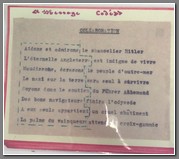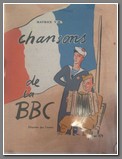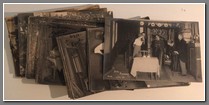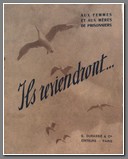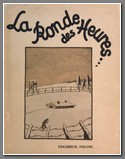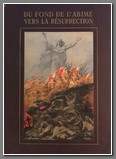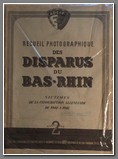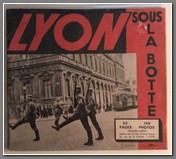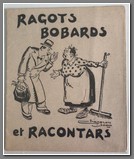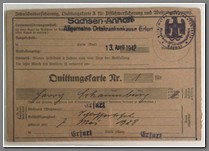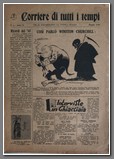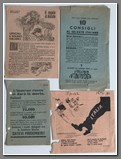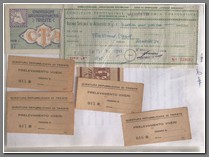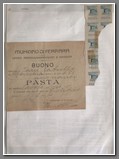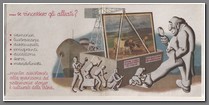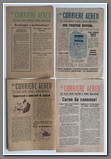World War 1 & 2
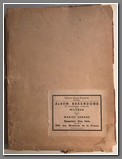 WW 584Album Brendonk. Lithographs by Wilchar. Brussels. It appears to be a proof copy. Rare. B
WW 584Album Brendonk. Lithographs by Wilchar. Brussels. It appears to be a proof copy. Rare. B
Price: $900.00
Note from Wikipedia: Fort Breendonk is a former military installation at Breendonk, near Mechelen, in Belgium which served as a Nazi prison camp during the German occupation of Belgium during World War II. Originally constructed between 1906 and 1913 as part of the second ring of the National Redoubt defending Antwerp, Fort Breendonk was used by the Belgian Army and was covered by a five-metre thick layer of soil for defense against artillery fire, a water-filled moat and measured 656 by 984 feet (200 by 300 m). It was used in both World War I and World War II by which time it had become militarily obsolete. Fort Breendonk was requisitioned by the Schutzstaffel (SS) shortly after the Belgian surrender on 28 May 1940 and used as a prison camp for the detention of political prisoners, resistance members, and Jews. Although technically a prison rather than a concentration camp, it became infamous for the poor living conditions in which the prisoners were housed and for the torture and executions which were carried out there. Most detainees were subsequently transferred to larger concentration camps in Eastern Europe. 3,590 prisoners are known to have been held at Fort Breendonk during the war of whom 303 died or were executed in the fort itself while 1,741 others subsequently died in other camps before the end of the war. In Belgian historical memory, Breendonk became symbolic of the barbarity of the German occupation. The camp was evacuated ahead of the Liberation of Belgium by the Western Allies in September 1944. It was briefly repurposed to detain Belgian collaborators. It was declared a "national memorial" in 1947 and has subsequently been open to the public as a museum. Many of the camp's personnel were subsequently tried for their wartime actions in Belgian courts.
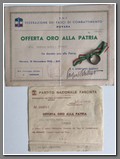 WW 579Offerta oro all patria, along with the much rarer government receipt. B
WW 579Offerta oro all patria, along with the much rarer government receipt. B
Price: $500.00
NOTE FROM WIKIPEDIA: Oro alla Patria ("Gold to the Fatherland") was a 1935 Italian fascist campaign that asked Italians to donate their gold assets to fundraise for their homeland. Faced with League of Nations sanctions for its Second Italo-Ethiopian War, the Fascist government collected 250,000 wedding rings from Rome and 180,000 from Milan, amid other personal gold jewelry and objects totaling 33,600 kilograms of gold and 93,400 of silver. In acts of sacrifice for the state, prominent figures donated items of great symbolic value: the Queen's wedding ring, the Prince's collar of the Annunciation, the dramatist Luigi Pirandello's Nobel Prize, Guglielmo Marconi's senator medal, and Mussolini's Rocca delle Caminate castle statue busts.

